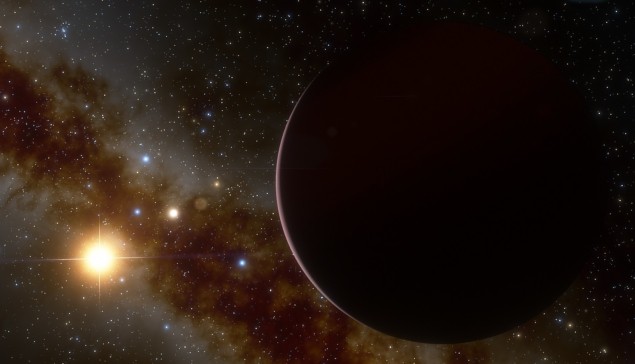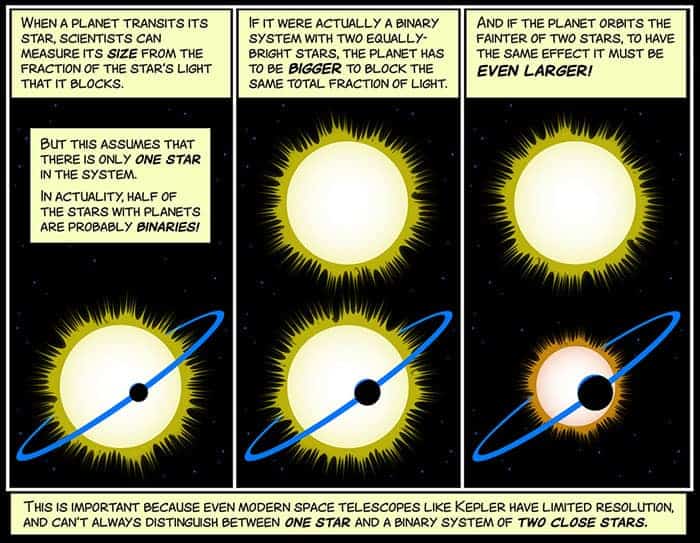
An exoplanet with about half the mass of Jupiter has been spotted orbiting a red dwarf star, challenging astronomers’ current theories of planet formation. Picked up by the CARMENES red dwarf survey, the unusual system was studied by an international team, led by Juan Carlos Morales at the Institute of Space Sciences in Barcelona. Their analysis led them to conclude that when planet-forming disks are both cold and large relative to their host stars, they may be more likely to fragment due to gravitational instabilities.
Having identified over 4000 extrasolar planets (exoplanets) to date, astronomers are gaining a good understanding of the stellar environments in which different types of planet form. For example, we now know that that while red dwarf stars – typically less than 60% of the Sun’s mass – are the most abundant type of star in the Milky Way, they only host around 10% of known exoplanets. At the same time, planets with similar masses to Jupiter only orbit around 10-15% of Sun-like stars, and are rarer still around dwarf stars. This pattern is thought to arise because of the inability of smaller planet-forming disks to develop solid cores large enough to quickly accrete gas before it escapes.
Now using a telescope in southern Spain, the CARMENES team has found an object that appears to defy this theory — a planet half the mass of Jupiter orbiting a red dwarf star called GJ 3512. The discovery was made using the radial velocity method, which calculates the mass and orbit of a planet by measuring how the star wobbles back and forth as the planet orbits around it. Morales and colleagues identified a highly eccentric orbit, which hinted at the presence of another planet with a similar mass, orbiting far further out.

Hidden stars affect exoplanet measurements
The team’s analysis suggested that these planets could have bypassed the initial core stages in their formation; instead, gaining mass through the direct gravitational fragmentation of GJ 3512’s protoplanetary disc. In most discs, such fragmentation is prevented due to a combination of shear forces and gas pressure, but Morales’ team suggest that the case could be different if the disk mass is larger relative to its host star. If the disk is cold enough – which could be the case for GJ 3512, which emits less than 0.2% of the Sun’s energy — Morales and colleagues believe that the mechanisms preventing fragmentation could be overcome. If correct, the team’s new theory would suggest that disk instabilities could be far more efficient at forming planets around low-mass stars than previously thought.
The research is described in Science.



